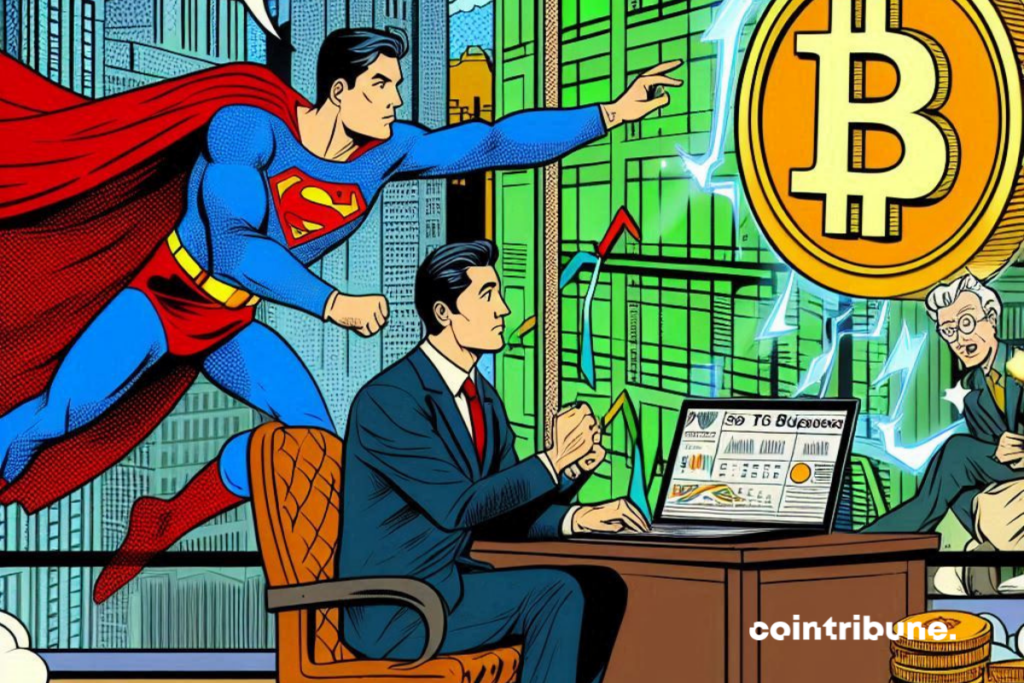Bitcoin reaches transaction highs as active addresses drop
The crypto universe always has surprises in store for us, and Bitcoin is no exception. Recently, the number of Bitcoin transactions has reached a record level, while paradoxically, the number of active addresses has significantly dropped. This intriguing phenomenon raises many questions: what is really happening in the world of Bitcoin?

Transactions are soaring, addresses are collapsing: A puzzling observation
According to the latest weekly report from Glassnode, two key indicators of Bitcoin activity show a surprising divergence. On the one hand, the number of transactions has reached historic highs. On the other hand, the number of active addresses has markedly declined.
These active addresses represent the number of unique addresses participating daily in transactions on the Bitcoin blockchain. This metric is often considered a reflection of the number of active users on the network.
The hypothesis would be that despite a decrease in active users, those who remain are incredibly active.
A bit like a nightclub where the number of partygoers decreases, but those who stay dance all night. Another comparison could be of a restaurant where fewer customers come, but those who do order much more than usual.
Historically, bullish periods in the Bitcoin market have always been marked by an increase in active addresses. However, this time, the dynamic seems different. The 30-day moving average of active addresses has decreased in recent months, despite strong market activity.
Conversely, the number of transactions has significantly increased, reaching nearly 612,000 per day, a figure close to the ATH (All-Time High). This divergence indicates that even as the number of active addresses decreases, the volume of transactions per address has exploded.
What could explain this anomaly? A deeper analysis reveals a curious correlation between the model of active addresses and the share of the number of transactions from Bitcoin inscriptions. Inscriptions, which allow data to be written onto Satoshis (Sats), the smallest unit of BTC, have been extremely popular since the beginning of 2023. However, their popularity seems to have recently declined.
The rise of Runes: A new player on the Bitcoin scene
A plausible explanation for this trend lies in the emergence of Runes. The Runes protocol allows users to introduce fungible tokens on the Bitcoin network through a mechanism different from traditional inscriptions.
Launched at the same time as the fourth Halving, Runes seem to have captured a significant share of the attention of Bitcoin users, leading to a decline in traditional inscriptions.
Data shows that the share of transactions attributable to inscriptions has fallen since mid-April, coinciding with the decline in active addresses.
Conversely, transactions related to Runes have increased, contributing to the overall rise in the number of transactions. This suggests that users are adopting new protocols and methods of interacting with the Bitcoin blockchain, altering the network’s traditional dynamics.
As the number of Bitcoin transactions reaches new heights and active addresses drop, we may be on the cusp of a new era for Bitcoin. Users are experimenting with new ways to interact with the blockchain, and protocols like Runes are playing an increasingly important role. This evolution could signal a paradigm shift in the use and perception of Bitcoin.
Maximize your Cointribune experience with our "Read to Earn" program! For every article you read, earn points and access exclusive rewards. Sign up now and start earning benefits.

Fascinated by Bitcoin since 2017, Evariste has continuously researched the subject. While his initial interest was in trading, he now actively seeks to understand all advances centered on cryptocurrencies. As an editor, he strives to consistently deliver high-quality work that reflects the state of the sector as a whole.
The views, thoughts, and opinions expressed in this article belong solely to the author, and should not be taken as investment advice. Do your own research before taking any investment decisions.